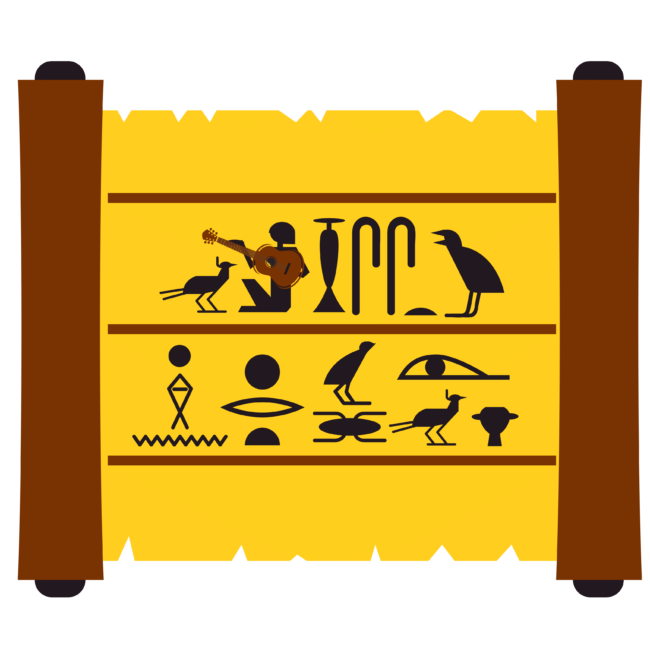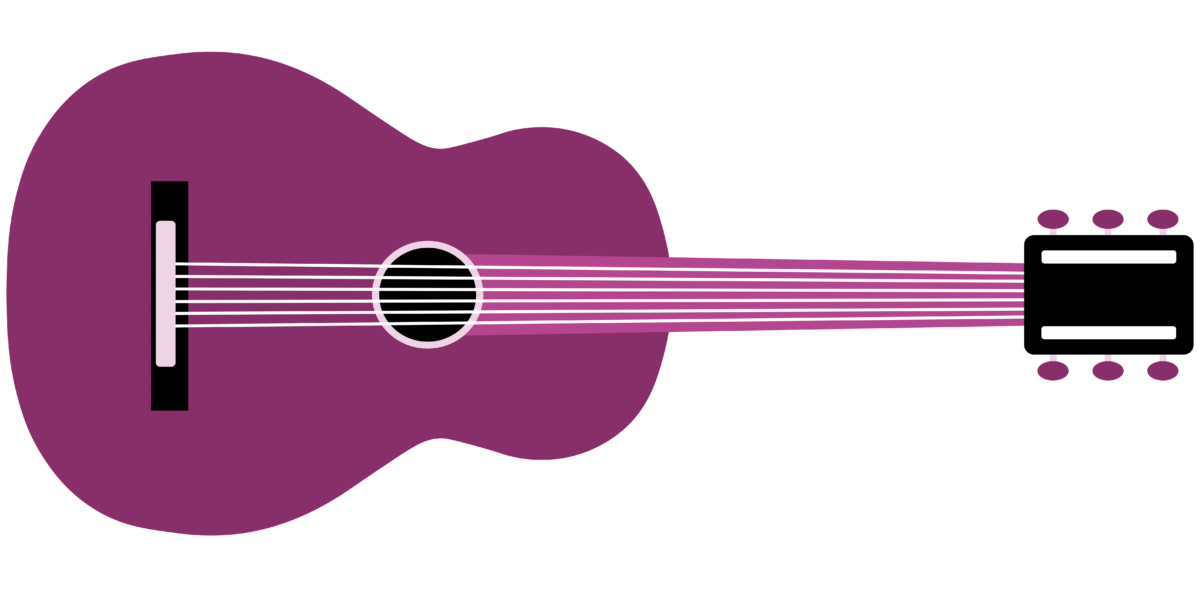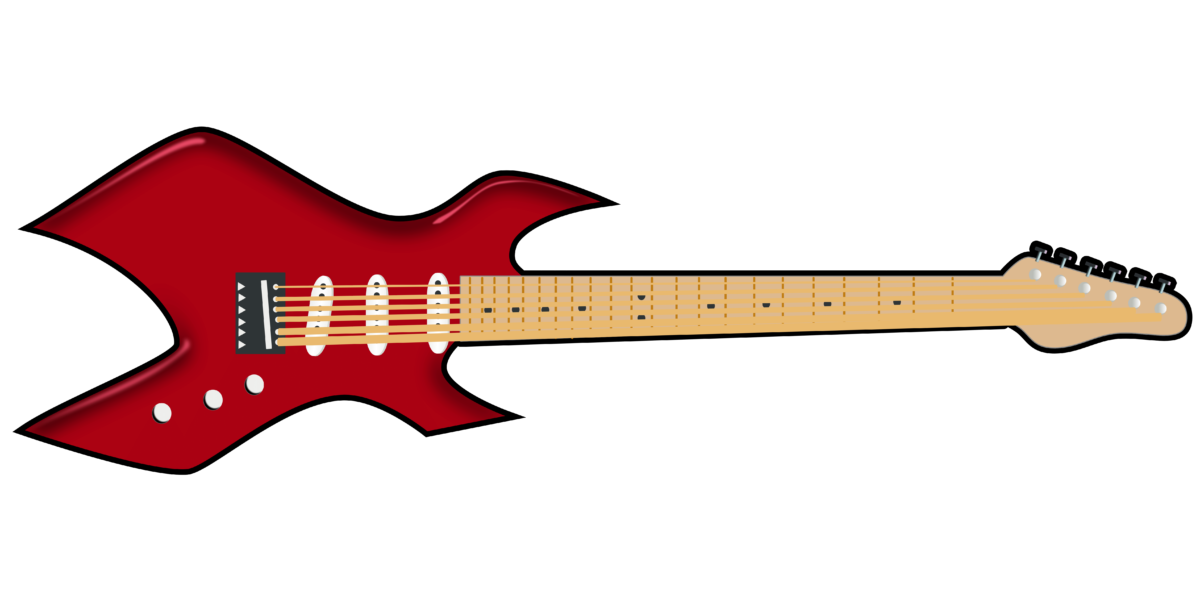Who Invented the Guitar? A Brief History

Do you know who invented the guitar? Learn more about the history of your favorite instrument.
History allows us to glimpse the past, contextualize the present, and understand the future.
As far as subjects go, it’s vast.
However, we carve a path through time by pursuing a specific topic (like the guitar). At the end of the road, we get a deeper understanding and appreciation of the topic and its events.
This article looks into the guitar’s origins and offers a brief overview of the events and people that shaped its evolution.
Origins of the guitar.
In history, the line between fact and myth can be ambiguous. Archeologists and historians try to make sense of the past with the evidence they find.

The origins of the guitar aren’t accurate. There’s no record detailing its lineage. Evidence of stringed instruments appeared between 4000 and 5000 years ago. You can see depictions of these instruments in Egyptian hieroglyphs.
But at which point is a stringed instrument considered a direct guitar ancestor?
This issue is a contentious one. Some scholars argue the family tree begins with the Greek lyre. Others claim the story of the guitar starts with the Arabic oud making its way to Europe during the invasion of Spain.
The exact point when a stringed instrument becomes a guitar may be unclear. However, we can see how the instruments have transformed over the centuries.
The evolution of the guitar.
Countless (too many to mention without writing a book) stringed instruments have been played over the ages, eventually taking unique shapes and creating distinctive sounds.
If you go back far enough, many instruments’ ancestry overlap–check out our blog, A Complete Piano History.
Lyre
Invented by the Hittites in 1500 BCE, the lyre is attributed mainly to the Greeks of classical antiquity. They used turtle shells for the instrument’s body, and the strings were made of animal intestines.
Poets would play the lyre to accompany their verses–some people would even use picks to play them!
Kithara
While the Greeks played the lyre, other stringed instruments emerged in Asia Minor and the Middle East. The instrument had a hollow oval shape and was played with strings. Although, the kithara didn’t have a neck or headstock.
Renaissance lute
The Renaissance Lute was a popular instrument in the Renaissance period (1400 to 1600). It shares many similarities to the oud, like the hollow-bodied teardrop shape, double stringing, short neck, and bent back headstock. Later versions of the Renaissance lute only had six pairs of strings, but the most significant change was the addition of frets along the neck. This assimilated the lute to the European tonality and was a significant stride toward the modern acoustic guitar. Because of the way it was played, the lute had polyphonic qualities, making it ideal for solo performances and accompanying singers.
Virtually everyone played the lute. Kings and queens adored its sound, playwrights like Shakespeare incorporated the lute into their plays, and you could hear it in taverns and street corners.
Renaissance guitar
The Renaissance guitar was similar to the lute in size and was double-strung. However, with this instrument, there are only four sets of strings, and rather than the rounded teardrop body, it has a flat hourglass shape. Additionally, the headstock is no longer bent back. With fewer strings, playing chords is much easier, giving the guitar a fuller sound.
Interestingly, the Portuguese brought the Renaissance guitar to Hawaii, which later altered and turned into the ukulele.
Baroque guitar
The Baroque guitar of the 1600s was larger than the Renaissance version. It had nine strings and allowed musicians to pluck and strum.
At this point, guts were the primary material for guitar strings. However, some instrument-makers would loosely wrap the intestines with metal string (gimped string) with the Baroque guitar.
Sitar
It wasn’t until 13th century India that things started to take shape. People play the sitar to this day. It has a long fretted neck, a hollow wooden body, and 18, 19, 20, or 21 strings. Interestingly, only six to seven of the strings are above the frets, while the rest are below them, and you can adjust the positioning of the frets along the neck. Sitar players use a mezrab to plug the strings.
Arabic oud
A significant point in the guitar’s evolution takes place with the Arabic Oud. The oud’s hollow body has a teardrop shape, giving it a bassy sound. It has a short neck, bent back headstock, and violin-like tuning pegs. The oud had 11 doubled strings, and musicians would use an elongated pick known as a plectrum to play.
The oud made its way to Europe with the Arabic invasion of Spain (the Umayyad conquest of Hispania). Within an episode of one of humanity’s violent expressions, there’s a crucial exchange that occurs.
In Spain, changes were made to the oud, which led to the creation of the Renaissance lute.
19th-century guitar
Around the year 1800, we begin to see six single-stringed guitars. However, they’re still a bit smaller than modern guitars. With these instruments, gut strings are fully wound with metal, giving them a loud and punchy base sound, revolutionizing guitar music for the time.
With single strings, tuning the instrument became much easier. Because there were fewer strings, manufacturing the instrument was far more convenient and affordable. The 19th-century guitar had 22 metal frets (considerably more than previous renditions).
Additionally, with metal strings, innovations were needed to secure them to the body. A metal pin bridge held the strings in place. Instrument-makers would drill holes into the guitar’s body and pin the string.
From the 19th-century guitar, we move on to the classical guitar.
Who invented the classical guitar?
Antonio Torres Jurado (1817-1892) was a Spanish guitarist, luthier, and the most important guitar maker of the 19th century. Considered the father of the modern classical guitar, it’s thanks to his innovations that the modern guitar has its shape, dimensions, and tuning.

The classical guitar’s body is deeper and spacier, allowing it to create greater, fuller, and louder sounds. However, arguably the most game-changing aspect is in the tuning pegs. Instead of tunning pegs that had been used for centuries prior, the classical guitar was equipped with tuning gears. Gears enable musicians to fine-tune their instruments–turning them moves the strings in smaller increments.
Despite significant technological innovations, the classical guitar remains the fundamental design manufacturers use today.
Who invented the electric guitar?
Adolph Rickenbacker invented the electric guitar in 1931.
Rickenbacker was born in Basel, Switzerland, in 1887. He immigrated to the United States in 1896 and settled in Los Angeles, where he began his career as a machinist and toolmaker.
In 1909, he and two partners founded the Rickenbacker Manufacturing Company, which produced metal stampings for the automobile industry. The company later diversified into other products, including electric guitars.

In 1931, Rickenbacker developed the first electric guitar, which several major manufacturers adopted. He later founded the Rickenbacker Guitar Company, which produced several iconic instruments, including the “Frying Pan” and “Capri” models.
Rickenbacker died in 1976. His legacy continues to influence the design of electric guitars.
So who invented the guitar?
The history of the guitar is long and complex. It would take books to explain the full story. This blog highlights many of the notable developments of the instrument.
At Simply, we help blossoming musicians hone their skills by offering useful information and tools that empower them. One of the tools in our shop is Simply Tune. It’s a free chromatic tuner that lets you quickly and effectively tune your guitar. So you can get back to practicing and playing with a guitar that sounds just right.
Another excellent guitar-mastering tool we have is Simply Guitar. But only use it if you want to learn to play fast and efficiently!









